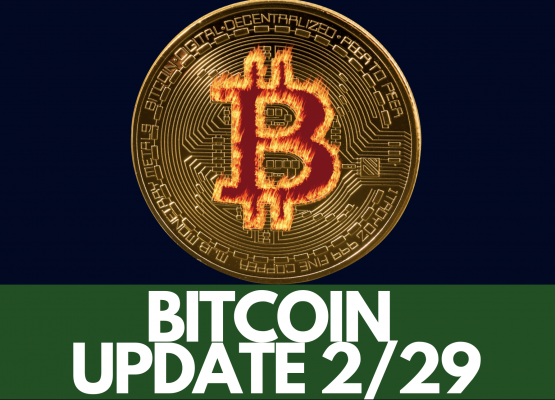Crypto & NFT Trading

Top 5 Crypto Coins That Could Go Parabolic Soon
Hope you all enjoy the video! In today’s video we discuss 5 cryptocurrencies and/or altcoins that have the potential to go on a parabolic run beginning this year and going into 2025. These cryptos are based upon the typical 4 year cycle and fear and greed cycle as we have seen in the crypto markets […]

Bitcoin Flirts with $70,000 Again: June 4, 2024 Update
Bitcoin Price Action: June 4, 2024 Today, Bitcoin experienced notable price action, reflecting the cryptocurrency’s inherent volatility and significant market interest. As of writing this on June 4, 2024, Bitcoin is trading at approximately $70,845.30, showing a 0.43% increase from the previous day. The price peaked at $71,136.90 in the current session, before fluctuating throughout […]

Will Bitcoin Hit $250,000 by 2025?
Hope you guys enjoy the video below, where I discuss if Bitcoin can potentially hit $250,000 or more by 2025. This is based upon the historical price action of Bitcoin. If we assume that the 4 year crypto cycle continues, with Bitcoin leading the way, then perhaps Bitcoin could in fact make a strong move […]

Crypto Boom: Will Bitcoin Hit $100,000+ by December?
In this video and as an introduction to my other channel which is relaunching, Multi Bagger Investing, I discuss some of the potential opportunities for you to profit in the coming crypto four year super cycle, which has seen massive price surges in recent years, particularly in many higher risk assets, including various cryptocurrencies. Following […]

The Cryptocurrency Market is Turning Very Bullish: April 2024 Update
As Bitcoin marches towards its next halving event, the cryptocurrency market finds itself at a fascinating crossroads, both historically and in anticipation of what’s to come. The current landscape is full of speculation, excitement, and a notable sense of apprehension. Today, we will be diving into some recent developments in the cryptocurrency market, with a […]

3 Cryptocurrencies to Watch Amid Bitcoin’s Meteoric $70,000+ Rise
You need to be logged in to view this content. Please Log In. Not a Member? Join Us

Bitcoin Slips 2% After Hitting 2 Year High & Breakout Above $62,000+
Bitcoin (BTC) prices experienced a correction on Thursday, February 29, 2024, dropping over 2% after a surge earlier this week. This decline comes after the cryptocurrency briefly surpassed the $62,900 mark on Wednesday, February 28, 2024, reaching its highest point in over two years. Following a significant upward trend in the past month, fueled by […]

BREAKING NEWS: Bitcoin (BTC) Crosses $60,000 for First Time in Over 2 Years
On February 28, 2024, the cryptocurrency world witnessed a significant event as Bitcoin, the leading digital asset, surpassed the $60,000 mark for the first time in over two years. This milestone signifies a remarkable comeback for Bitcoin, which had faced a significant decline and vicious bear market, specifically in 2022, which was additionally marked by […]

The Complete Guide to Investing in Cryptocurrencies in 2024 & Beyond
Introduction Cryptocurrencies like Bitcoin have exploded in popularity in recent years. With their extreme price volatility, along with their high upside potential, cryptocurrencies can be both an exciting, along with a high-risk investment choice. If you’re new to the crypto/blockchain world, getting started investing or trading these digital assets may seem daunting. This guide aims […]

Recent Breakthroughs and Regulatory Shifts: Steering the Future of Blockchain and Crypto
The blockchain and cryptocurrency landscapes have witnessed remarkable developments over the past few weeks, signaling both growth and challenges ahead. From regulatory crackdowns to groundbreaking innovations, here’s a concise overview of the pivotal changes shaping the future of these sectors. Intensifying Regulatory Scrutiny and Innovations 1. Regulatory Crackdowns: A significant uptick in cryptocurrency investment scams […]
